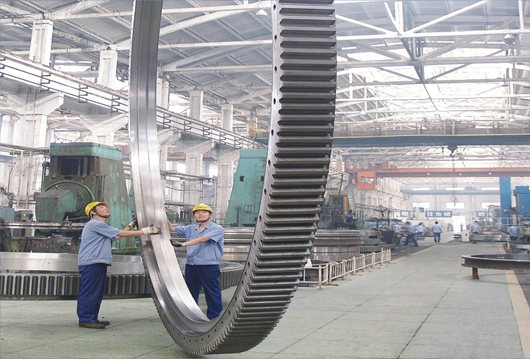The basic form of bearing failure, there are two specific
1. The failure of adhesion and abrasive wear
It is one of the most common kinds of bearing surface failure mode. The relative sliding friction between the bearing parts lead to the sliding surface of the metal continued losses referred wear. Continuous wear parts will change the size and shape, bearing with the gap increases, the work surface morphology deteriorated, so the loss of precision rotation, the bearing is not working properly. Sliding wear can be divided into abrasive wear, adhesive wear, corrosion and wear, fretting, of which the most common abrasive wear and adhesive wear.
The phenomenon of friction between the surface of the bearing components caused by foreign particles or hard metal grinding friction surface wear belongs to abrasive wear. It is often caused by chipping formula or furrow-like abrasions on the bearing surface. External hard particles often come from dust in the air or lubricant impurities. Adhesive wear profile peak is mainly due to the friction surface of the friction surface uneven force, local friction heat so that the friction surface temperature, resulting in oil film rupture, severe localized surface layer of the metal will melt and the contact point produces adhesion, tear off, the process of re-circulating adhesion, causing serious friction surface welding and stuck.
2. The contact fatigue (fatigue wear) Failure
Contact fatigue failure is one of the most common kinds of bearing failure modes, failure of the bearing surface is subjected to repeated cyclic contact stress effects produced. Contact fatigue spalling surface bearing parts from a fatigue crack initiation and propagation of cracks into the process. The initial contact fatigue cracks are generated at the maximum orthogonal shear stress from the contact below the surface, and then extended to surface pitting exfoliated or small flaking, pitting former is called spalling or pitting; the latter is called shallow layer peeling. If the initial crack in the hardened layer and core portion junction produce, resulting in early peeling hardened layer, then known as the hardened layer peeling.

ZENEO bearings
Inquiry
©Hong Kong ZENEO bearings limited
